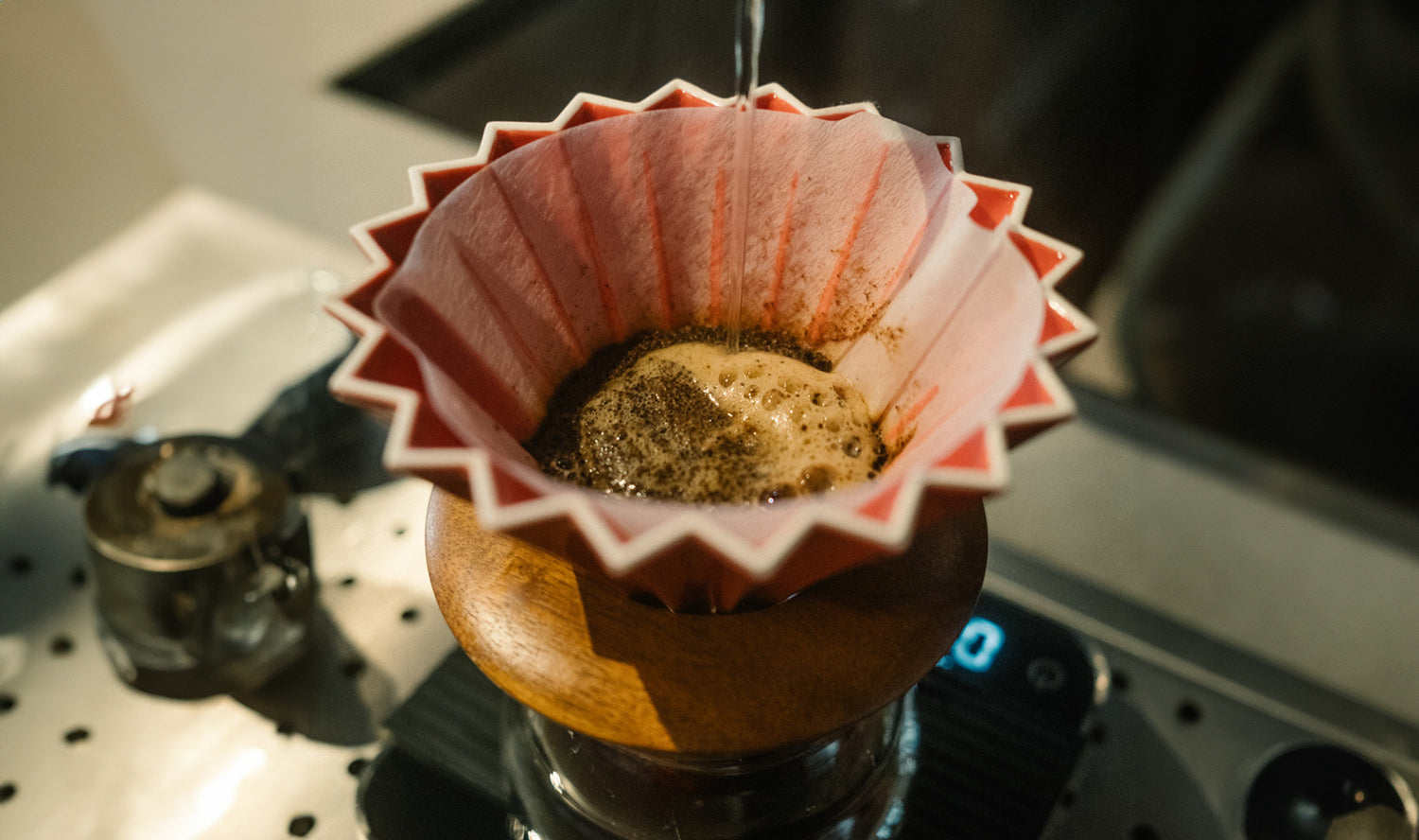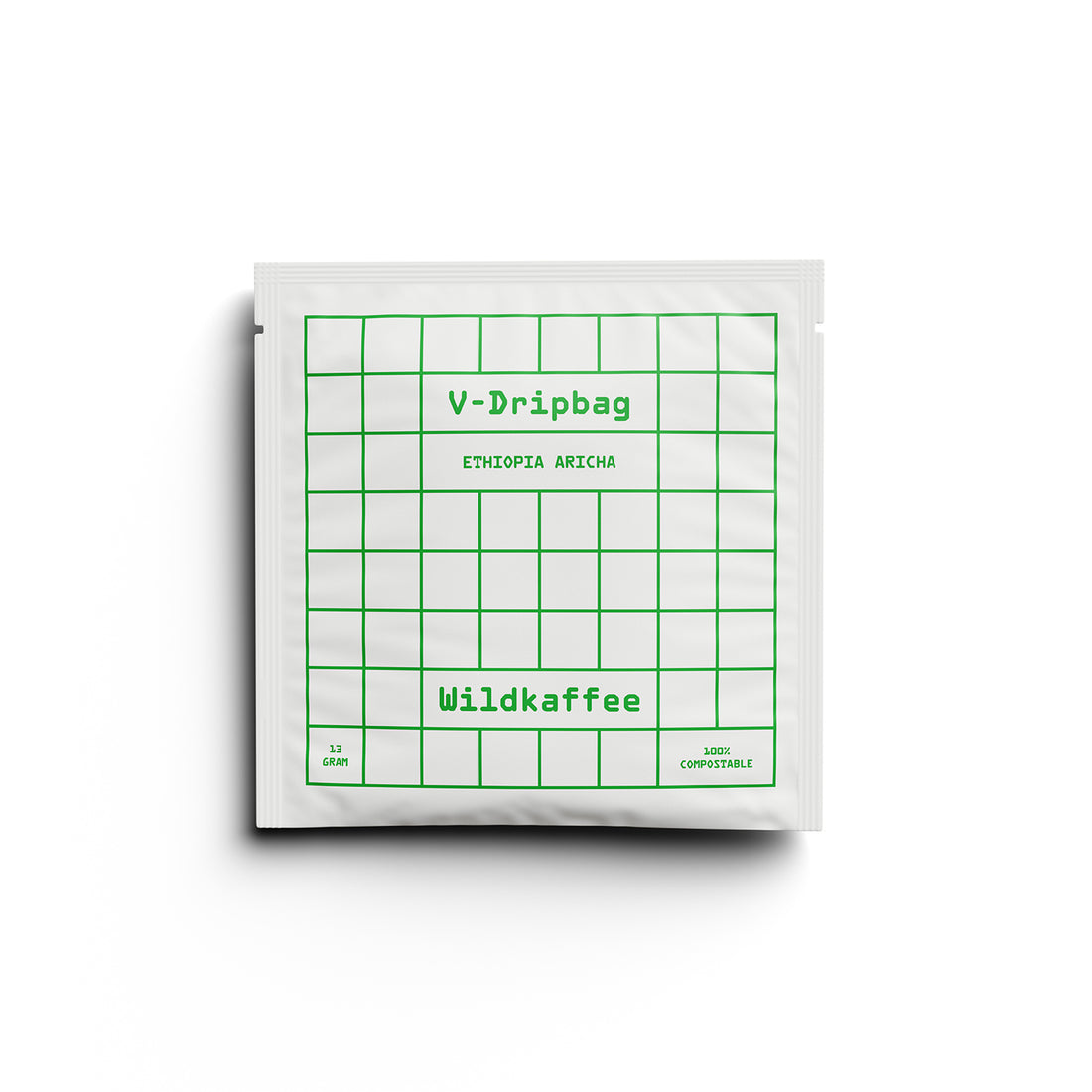Brewing temperature for filter coffee: influence on the cup profile and precise control
The correct brewing temperature for filter coffee is neither a coincidence nor unimportant, but a controllable lever: It influences extraction, body, clarity, and aromas—and thus every cup. Here's how to intelligently plan and control your coffee water temperature.
Brief overview: Why brewing temperature matters
The brewing temperature of coffee determines how quickly and how completely soluble substances are extracted from the ground coffee. A few degrees Celsius more or less significantly shifts the balance of acidity, sweetness, bitterness, and body. By carefully selecting and maintaining the brewing temperature, you can reproduce your favorite profile and adapt recipes to the bean, grinder, and environment.
Brewing temperature vs. boiler temperature: important terms
-
Boiler/start temperature: Temperature of the water in the kettle just before pouring
-
Brewing temperature at the bed: actual temperature of the water in the coffee bed (crucial for the cup profile )
-
Infusion temperature: Temperature of the water during the individual pour phases
-
Temperature stability: How consistent the temperature remains throughout the entire brewing process
Recommended ranges according to SCA (90–96 °C)
The SCA brewing temperature recommendation is 90–96 °C at the point of contact with the coffee. In practice, many people base their brewing temperature on 92–96 °C in the boiler. Fine-tuning depends on the roast level, the grinder, and the desired aroma.
- Light roasts: tend to be 94–96 °C (more sweetness, more complete extraction)
- Medium roasts : often 92–94 °C
- Dark roasts : 90–92 °C to reduce bitterness

How temperature affects the cup profile
Acidity, sweetness, bitterness and body in interaction
- Lower temperatures (90–92 °C): emphasize acidity and clarity; but risk thin body
- Medium temperatures (92–94 °C): balance sweetness and acidity; often the “sweet spot” for many filters
- Higher temperatures (94–96 °C): promote sweetness, viscosity and extraction, but increase the risk of bitterness in sensitive beans
The brewing temperature of filter coffee is therefore a direct influence on the flavor. A single degree can determine whether citrus tastes fresh or harsh, or whether caramel tastes round or dull.
Solubility, extraction rate and volatile aromas
As temperature rises, the solubility of many coffee components increases, and with it the extraction rate. At the same time, aromas evaporate more quickly. Water that's too hot can "blow away" delicate notes and favor bitterness. Water that's too cold extracts organic acids earlier, leaving behind sugar and Maillard compounds—the cup remains thin and pointed.
Roasting degree-dependent temperature windows (light vs. dark)
- Light roasts : denser, more acidic, less porous – benefit from higher temperatures to enhance sweetness and body
- Medium roasts : react flexibly, often better with medium temperatures; here the target profile is decisive
- Dark roasts : extract easily; lower temperatures help avoid bitterness and ashiness
Influence of altitude and boiling point
As altitude increases, the boiling point decreases. At 1,500 m, water boils at around 95 °C. This means that boiling water is less "aggressive" there than at sea level. Adjust your starting temperature and recipes—especially for windy outdoor setups .

Temperature stability: the underestimated lever
Heat losses through boilers, drippers, filters and air
Temperature stability is often more important than the exact starting temperature. The greatest losses occur during initial contact with cold equipment and during long breaks between infusions.
- Boiler: Heat loss through open neck and evaporation
- Dripper/Filter: Porcelain/glass draws heat; paper filter acts as a cooling fin
- Air: high pouring height and draft cool noticeably
- Server: cold glass jug absorbs heat from the finished coffee
Preheating protocols for V60, Kalita and Chemex
- V60 02 : Preheat dripper and server thoroughly to 95–98 °C; rinse filter; drain water, then start quickly
- Kalita 185 : Flat bottom retains heat better, but preheat; insert filter and rinse to remove paper notes and stabilize temperature
- Chemex 6 Cup : Thick glass requires particularly intensive preheating; rinse the double-layer filter thoroughly
Pro tip: Don't leave any puddles in the dripper after rinsing – they will distort the first brewing phase.
Flow rate, infusion phases and temperature drop
- Shorter breaks between pours reduce cooling
- Moderate flow rate with low pouring height maintains the temperature
- Lid on the boiler and insulated servers slow down the temperature drop
- In-brew thermometers show how much the bed temperature drops during bloom and main pour
Practice: precise temperature control for filter coffee
Without a thermometer: Timing after cooking and rules of thumb
- Leave the kettle open for 30–60 seconds from boiling: roughly 95–92 °C (depending on the kettle, filling quantity, environment)
- Fast first pour after take-off brings more heat into the bed, slow pours cool more
- Wait 10–20 seconds less in winter (compensate for cold equipment), 10–20 seconds longer in summer
- Rule of thumb: Light roast = shorter cooling time; dark roast = longer cooling time

With thermometer/temp kettle: target vs. starting temperature
You can define a target temperature using a coffee thermometer or a PID kettle. Important: The set boiler temperature is not the bed temperature. Plan for offsets:
- Without preheat: Boiler 3–5 °C higher than target at bedside
- With consistent preheat: offset often only 1–2 °C
- Long bloom or many pours: +1–2 °C starting temperature to compensate for drops
Recipe cards: V60 02, Kalita 185, Chemex 6 Cup (Temp Window)
Guidelines that you can adjust to your grinder and beans:
- V60 02 (15–16 g per 250 g, 2:30–3:00): 93–95 °C start; light roast 95–96 °C; medium 93–94 °C; dark 91–92 °C
- Kalita 185 (24 g to 400 g, 2:30–3:15): 92–94 °C; flat bed construction retains heat, therefore often 1 °C lower than V60 temperature
- Chemex 6 Cup (40 g to 660 g, 3:45–4:30): 94–96 °C due to high thermal mass and thick filter
For very fine grinds or long drawdowns, lower the temperature by 1–2 °C to avoid bitterness; for a cup that is too light or thin, increase it by 1–2 °C.
Tools and setups for consistency
Kettle with temperature control (PID): purchase criteria
- Precision: 1 °C steps, stable control without large overshoot
- Gooseneck : fine flow rate control for even infusions
- Lid/Insulation: reduces evaporative cooling
- Hold function: maintains target temperature throughout the entire brewing process
- Volume: tailored to your brew sizes (too large = more heat loss with small quantities)
In-brew thermometer, insulation and serving jugs
- In-brew thermometer: measures in the bed or at the drain; ideal for fine-tuning
- Insulated dripper sleeves or cloths: prevent excessive cooling of porcelain/glass
- Preheated, double-walled servers: keep the extract temperature stable
- Timer/Scale: shorter breaks, consistent infusions
Alternatives on the go : Induction, Thermos, Camping
- Induction/small pot: after cooking, let it cool down uncovered for 30–60 seconds, water in a thermos for stability
- Camping stove: Use wind protection; keep water just below boiling point; short pours
- Thermos as a kettle: preheat, then fill with water; lower losses with multiple pours

Error diagnosis and fine-tuning
Bitterness vs. over-extraction vs. too hot
- Bitter, dull, drying: Reduce temperature by 1–2 °C, grind coarser, shorten total contact time
- Ashy or burnt: Temperature too high or dark roast – brew significantly cooler (-2–4 °C)
- Astringency despite short time: Check water recipe (too much carbonate can accentuate bitterness)
Acidity/thin body: under-extraction vs. too cold
- Sour, watery, grassy: Temperature +1–2 °C, finer grinding , longer saturation, more even pours
- Too sharp acidity: slightly higher temperature and slightly longer contact time for more sweetness
Water formulation and minerals as modulator
Extraction and temperature interact with the water: Hardness (Ca, Mg) promotes extraction and mouthfeel, while bicarbonate buffers acids. Very soft water can make the cup appear thin, while very hard water reduces clarity. When changing the water, adjust the temperature by 1–2°C to balance the profile.
Seasonal influences and consistency
Winter: cold equipment, higher heat losses, offsets
- Preheat intensively (dripper, filter, server, cups )
- Set the boiler 1–2 °C higher, shorten breaks
- Insulate (towel around dripper, lid on the kettle)
Summer: slower cooling, adjustment of the starting temperature
- If necessary, start 1–2 °C lower to avoid bitterness
- Longer breaks are less problematic, but still remain consistent
Outdoor and altitude: boiling point, wind and heat shielding
- Altitude: boiling water is “cooler” there – often useful
- Wind protection and low watering height to prevent cooling
- Use thermos/insulated jugs to ensure consistent pours
Common mistakes and quick checklist
- No preheat: always preheat drippers, filters, servers
- Too long pauses: prefer short, even pours
- Wrong starting value: Pay attention to the roasting level (light higher, dark lower)
- No compensation in winter: +1–2 °C and more Preheat
- Large watering height: Avoid heat loss, water close to the bed
- Underestimated water quality : Check minerals and adjust temperature
- Just look at the boiler: bed temperature and stability are crucial




